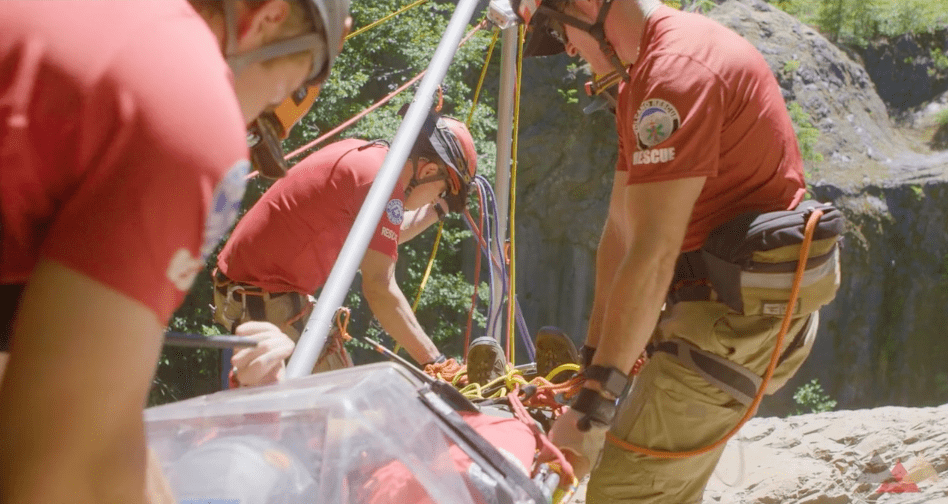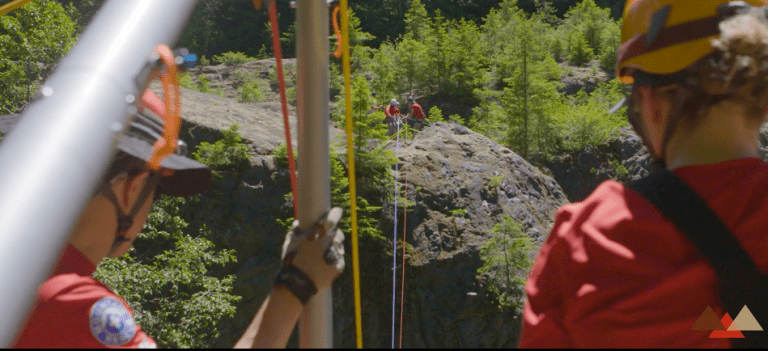If you’ve been following Rigging Lab Academy at all for the last year or so, it is clear there has been a large emphasis placed on the Artificial High Directional. There are so many reasons why this is, and if you haven’t quite been brought up to speed yet, check out some previous blogs and jump right in. So, we’ve established that a high directional is paramount and should always be used if one is available; one question remains. I frequently am asked by users of AHDs, how do I know what type of configuration to use and when? This article will explore the decision-making process that I personally use, and one that I believe works.
In short, there are three mental checkboxes we must hit when decided how to set up our AHD. This decision-making process must be fast and will come naturally with practice. The factors we must consider are
- Time constraints (patient condition)
- Rigging Environment
- Skill Level of the team
The first listed item in my mental check list is time constraints. This encompasses several different things. First and foremost, what is the status of the patient? If the patient is severely injured and time is of the essence, a configuration with our AHD that is the most expedient will be the best option.
Time constraints can also come in the form of environmental factors.
Is it sub zero weather and snowing? Perhaps 100 degrees with no protection from the sun? All of these will demand a faster response from the rescue team. Naturally, you should now be thinking, “you said the most expedient configuration, so what exactly is that”? This is where my “plan A” comes in to affect. For me and my team, an easel A frame with our Arizona vortex is always going to be the first option. There are reasons why a different frame may be more beneficial, which we will discuss later in this article, however not many can argue that a tripod type of set up requires the least amount of time to rig. The simple reason being, this configuration does not require guying systems to make it stable. Two team members can assemble this in just a few minutes and be ready to conduct an operation. “Plan B” in regard to time constraints for me starts to add configurations that require guying. For example, if I had a few minutes to rig because maybe the patient has an isolated broken ankle, I will almost always choose a Sideways A frame (if the environment allows..that point is coming). I prefer the sideways A frame because we no longer need to work between the confines of the two front legs of an easel frame. This makes edge transitions, especially with a litter all that much easier. So, our first check box is time, the more time we have the more fine tuned we can make our configuration. Always make your plan A however the one that takes the least amount of time. At its core, this is rope rescue, not rope “make extravagant things that look cool in pictures”.
 Rigging Environment
Rigging Environment
Our next factor that we must consider in our mental check list is the rigging environment. This like time, as several different components to consider. The first one that comes to mind is what environment does my team respond to? Meaning, am I on a team that will likely respond to a car over an embankment, and can pull right up with my big well-equipped rescue truck and throw tons of equipment at the situation? Or, am I on a mountain rescue team that will more than likely walk 5 miles just to get to the location of the rescue? You can see where my line of thinking is, and both of these will necessitate different AHD configurations because of the environment. The fire service team with big trucks and easily accessible rescues will likely go to the easel A frame first, whereas the mountain rescue team would look at them like crazy people for electing to carry all that gear and only carry the equipment necessary to rig a gin pole. In that case, it was the environment that dictated the best option; even though as discussed above, a gin pole is likely never the most expedient to rig. Environmental factors can also be much more literal. Meaning, what does the edge where the rescue will take place look like? Is it totally empty with no trees in sight, or does it have some nice medium/large trees around it? If dealing with a “naked” edge and there are no potential anchors to use for guying systems, some sort of tripod is going to be required. Perhaps there are ways to make guying work by doing some advanced anchoring in tactful locations, but then we must go back to the first point..is that time efficient? If your edge has some trees close by, my choice will likely be a Sideways A frame. It is incredibly stable, and easier to work in and around than an easel A frame.
Skill Of The Team
The final factor on our mental check list, is the skill level of the team. This is perhaps the most dynamic factor because unlike the environment, we can easily change our team’s skill level. This is an extremely important consideration however when decided what configuration for your AHD you will go with. If you are in an environment where a Sideways A frame would work beautifully, and you communicate that to your team and get those uncertain stares we have all seen before, you had better change the plan. If you are the team leader, do not expect team members to be totally honest about what they feel comfortable with vs not. If you give them direction, they will try their best to carry out your wishes as to not make themselves or the team look bad; even if they have no idea what they are doing. This is a slippery slope, because we will end up circling back to our first factor (time) and placing a big F for failure in our check box. Almost assuredly, in the process of team members attempting to complete a skill outside their scope, the team will fail because an excessive amount of time will be spent on their tasks. Assess your team, if you know everyone is totally wired tight with a tripod and easel A frame, you must go with that on the scene of a rescue. Even if the environment allows for more beneficial options. This is where we have the ability to make this a dynamic factor. Train your team! If you have an artificial high directional, everyone must be totally comfortable with the easel A frame, and sideways a frame at a minimum. These will allow you to successfully conduct almost all the rescues you will face. As your team progresses, move on to more advanced configurations such as a gin pole.
[thrive_lead_lock id=’51985′]Hidden Content[/thrive_lead_lock]
To conclude, having an Artificial High Directional as part of your equipment cache is a tremendous benefit to your team. These tools allow for a plethora of different configurations, often only truly limited to the imagination once you have gained confidence in them. Remember that everything we do in rope rescue should be calculated. There is no “one size fits all” solution to every rescue we will face. Our AHD is not exempt from this. Every situation will call for different tactics, and now you have a reference for how to best decide how to configure your High Directional at your next rescue.
Cheers,
Jason










7 thoughts on “Planning Your Artificial High Directional: What to Use and When”
146436 217556I like this weblog so significantly, saved to fav. 194703
842027 113387Be the precise weblog in the event you have wants to learn about this subject. You comprehend considerably its practically onerous to argue to you (not that I personally would needHaHa). You undoubtedly put a new spin for a topic thats been discussing for some time. Nice stuff, simply nice! 901747
799395 319890Terrific paintings! That will be the type of info that are meant to be shared about the net. Shame on the seek for no longer positioning this publish higher! Come on over and consult with my web site . Thank you =) 798628
128104 959069An extremely fascinating go through, I may possibly not concur entirely, nonetheless you do make some actually legitimate factors. 296445
431105 574461Excellent weblog, Im going to spend far more time reading about this subject 630116
216271 799208I undoubtedly did not realize that. Learnt something new nowadays! Thanks for that. 325184
924958 466278This is fantastic content material. Youve loaded this with helpful, informative content that any reader can recognize. I enjoy reading articles that are so extremely well-written. 202187
Comments are closed.